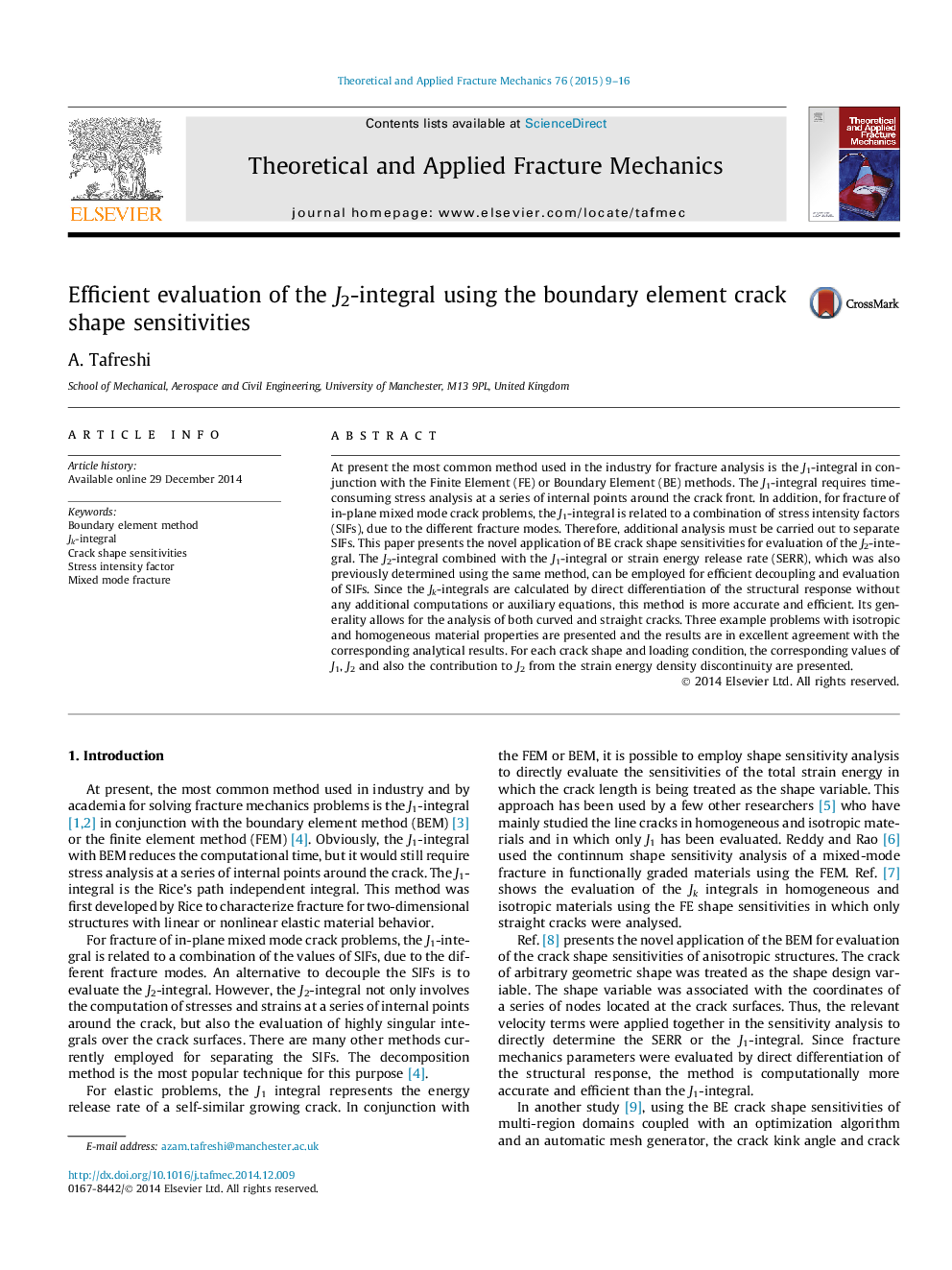| Article ID | Journal | Published Year | Pages | File Type |
|---|---|---|---|---|
| 807521 | Theoretical and Applied Fracture Mechanics | 2015 | 8 Pages |
•Mixed mode SIFs are computed using the boundary element crack shape sensitivities.•Jk-integrals are evaluated by direct differentiation of the structural response.•The generality of the method allows for the analysis of curved and straight cracks.•Stress analysis at a series of points around the crack front is not required.
At present the most common method used in the industry for fracture analysis is the J1-integral in conjunction with the Finite Element (FE) or Boundary Element (BE) methods. The J1-integral requires time-consuming stress analysis at a series of internal points around the crack front. In addition, for fracture of in-plane mixed mode crack problems, the J1-integral is related to a combination of stress intensity factors (SIFs), due to the different fracture modes. Therefore, additional analysis must be carried out to separate SIFs. This paper presents the novel application of BE crack shape sensitivities for evaluation of the J2-integral. The J2-integral combined with the J1-integral or strain energy release rate (SERR), which was also previously determined using the same method, can be employed for efficient decoupling and evaluation of SIFs. Since the Jk-integrals are calculated by direct differentiation of the structural response without any additional computations or auxiliary equations, this method is more accurate and efficient. Its generality allows for the analysis of both curved and straight cracks. Three example problems with isotropic and homogeneous material properties are presented and the results are in excellent agreement with the corresponding analytical results. For each crack shape and loading condition, the corresponding values of J1, J2 and also the contribution to J2 from the strain energy density discontinuity are presented.
